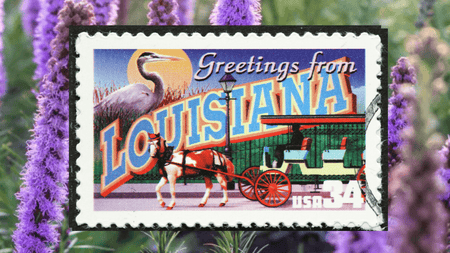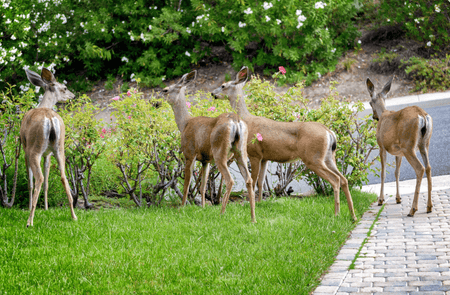Rekindling the Glow: Are Fireflies Declining?

Fireflies, with their mesmerizing bioluminescent displays, have captivated human imaginations for centuries. These enchanting insects, also known as lightning bugs, are not just nature's light show; they're vital indicators of ecosystem health. Unfortunately, like many other wildlife populations, fireflies are facing increasing threats from habitat loss, light pollution, and pesticide use. This decline leaves us with not only fewer twinkling nights but also an ecological imbalance.
While the enchanting glow of fireflies has illuminated summer nights for millennia, recent whispers suggest a dimming trend. Anecdotal reports and expert insights point towards a decline in firefly populations across the globe, urging us to investigate and act.
To shed light on this issue, firefly expert Sara Lewis from Tufts University, along with fellow members of the International Union for Conservation of Nature (IUCN) Firefly Specialist Group, embarked on a crucial mission in 2020. Partnering with the Xerces Society for Invertebrate Conservation and the New Mexico BioPark Society, she set out to assess the conservation status of North American fireflies. By meticulously scrutinizing data for 132 species across the U.S. and Canada, they employed the IUCN Red List criteria, the global benchmark for animal and plant conservation assessments.
The findings, published in PLOS One in November 2021, revealed a mixed picture. While roughly one-third of U.S. firefly species appear stable, the shadows of extinction threaten at least 18 others. These imperiled inhabitants primarily reside in geographically confined regions of the Southeast, mid-Atlantic, and Southwest.
Bethany Beach Fireflies & What They Can Teach Us
Among them, the Bethany Beach firefly (Photuris bethaniensis) stands as a beacon of urgency. Confined to a mere 20-mile stretch of Delaware's southern coast, its distinctive bright green flashes have become a rare sight. Extensive surveys have revealed its presence at only seven locations in recent years.
Similar to other at-risk fireflies, the Bethany Beach species grapples with the formidable foe of habitat loss and degradation. This threat resonates particularly sharply for fireflies like P. bethaniensis, whose larvae thrive exclusively in the specific ecological niche of freshwater wetlands nestled between sand dunes. Unfortunately, the past 50 years have witnessed a substantial decline in this habitat due to coastal development.
Facing these challenges, the Bethany Beach firefly now bears the IUCN Red List's "critically endangered" label and stands designated as endangered in Delaware. This species also holds the distinction of being the first firefly proposed for federal protection under the U.S. Endangered Species Act.
The plight of the Bethany Beach firefly serves as a stark reminder of the interconnectedness of our natural world. Their fading glow illuminates the need for collective action. By embracing native plant gardens, minimizing light pollution, and advocating for conservation measures, we can help rewrite the narrative for fireflies and countless other species facing similar threats. Let us collectively rekindle the magic of these bioluminescent wonders, ensuring their enchanting light continues to grace our summer nights for generations to come.
Losing Lightning Bugs & How To Help

Habitat loss has emerged as the primary culprit in the dwindling firefly populations. Deforestation, urbanization, and intensive agriculture fragment once-connected landscapes, isolating firefly populations and depriving them of essential resources like food and shelter.
- Statistics: A 2016 study by the Xerces Society for Invertebrate Conservation found that one in three firefly species in North America may be at risk of extinction.
Light pollution, a byproduct of our 24/7 world, disrupts firefly communication, making it difficult for them to find mates and reproduce. Artificial lights at night confuse fireflies' bioluminescent signals, hindering their ability to attract partners and complete their breeding cycle.
- Statistics: A 2020 study published in the journal Science Advances found that light pollution reduces firefly abundance by up to 70%.
Pesticides, while targeting undesirable insects, often leave collateral damage, wiping out firefly larvae and their food sources. Insecticides not only directly kill fireflies but also decimate the populations of snails, slugs, and other soft-bodied insects that firefly larvae rely on for food.
- Statistics: A 2019 study by the University of Maryland found that neonictinoid pesticides can reduce firefly populations by up to 90%.
The consequences of these threats are evident in dwindling firefly populations across the globe. Some species, like the American shad fly, are already classified as endangered, while others are experiencing significant declines. This downward trend underscores the need for immediate action to protect these bioluminescent marvels.
A Glimmer of Hope: The Power of Native Plant Wildlife Gardens
The good news is that we can all play a role in supporting firefly populations, starting right in our own backyards. By creating a haven for these nocturnal wonders, we can contribute to their revival and enjoy the magic of their presence. The key lies in embracing native plant wildlife gardens.
Beginner's Guide to Building a Firefly-Friendly Habitat
Native plants hold the secret to a thriving firefly haven. Unlike their ornamental counterparts, native species have co-evolved with local wildlife, forming intricate relationships. For fireflies, this translates to a reliable source of food and shelter at every stage of their life cycle.
Larvae: Firefly larvae primarily feed on soft-bodied insects like snails and slugs. Native plants attract these prey species, providing a banquet for developing fireflies.
Adults: Adult fireflies, depending on the species, feed on pollen, nectar, or even dewdrops. Native plants offer a diverse buffet of these essentials, ensuring adult fireflies stay fueled and energized.
More: How To Build Firefly Habitat
Firefly Gardens: Glowing Potential
Building a native plant wildlife garden for fireflies doesn't require a complete landscape overhaul. Even small pockets of native plants can make a significant difference. Here are some key elements to consider:
Diversity is key: Plant a variety of native species that bloom throughout the firefly season (usually late spring to early fall) to provide a continuous food source. Opt for a mix of wildflowers, shrubs, and small trees to cater to different firefly behaviors.
Our custom-curated Firefly Delight native plant collection isn't just a feast for the eyes, it's a haven for fireflies! Each plant in this curated selection provides something special for these luminous charmers, from larval lunches to adult love-light buffets.
- Oxeye Sunflower (Heliopsis helianthoides): These cheerful giants tower over the garden, offering a smorgasbord of pollen and nectar for adult fireflies. Their sturdy stalks also provide perfect platforms for fireflies to survey their territory and flash their mesmerizing signals.
- Smooth Blue Aster (Symphyotrichum laeve, Aster laevis): These dainty blossoms paint the late summer nights with a splash of azure. They're a magnet for nectar-seeking fireflies, refueling them for their enchanting light shows. Plus, their dense foliage provides cozy hideaways for resting fireflies.
- Little Bluestem Grass (Schizachyrium scoparium): More than just an ornamental filler, this wispy grass forms a protective haven for firefly larvae. Its delicate blades shelter these tiny creatures from predators while offering them easy access to a smorgasbord of soil-dwelling insects.
Think layers: Include plants of different heights, from groundcovers and grasses to shrubs and small trees, to create a layered habitat that caters to different firefly behaviors. Some fireflies prefer to flash from the ground, while others perch on vegetation. Adding native trees, grasses and forbs helps retain soil moisture for firefly larvae to live, shelter for adult fireflies, and grasses are needed for mating.
Other great native plants to add to your yard for firefly habitat include switchgrass (Panicum virgatum), frogfruit (Phlya nodiflora), goldenrod (Solidago), buttonbush (Cephalanthus occidentalis), and native pine trees.
Wetlands welcome: If space allows, incorporate a small water feature for wildlife or bog garden. Damp areas attract prey for larvae and provide moisture for adult fireflies.
Leave it wild: Resist the urge to over-prune or tidy up your garden. Fallen leaves and debris provide shelter for fireflies and their prey. Fallen logs and branches can also serve as breeding grounds for some species.
More: Wildlife Gardening for Beginners
Minimizing Threats For Declining Firefly Populations

While native plants are the foundation of a firefly-friendly haven, additional steps can further enhance your efforts:
Reduce light pollution: Turn off outdoor lights whenever possible, especially during peak firefly season. Shield remaining lights with amber or yellow bulbs, less disruptive to fireflies. Consider motion-sensor lights if you need some illumination.
Ditch the pesticides: Broad-spectrum lawn chemicals are especially deadly. Let fireflies control your grubs, slugs, and snails naturally. If necessary, opt for organic pest control methods to protect fireflies and their food sources. Encourage your neighbors to do the same, creating a larger safe haven for fireflies.
Spread the word: Encourage your neighbors and community to join the cause by creating their own firefly havens. The more interconnected these havens are, the greater the impact on firefly populations. Share your efforts on social media and inspire others to take action. #GardenForWildlife
Citizen science: Participate in citizen science projects like Firefly Watch or the Xerces Society's Firefly Conservation Program. These programs rely on the public to monitor firefly populations and contribute valuable data to scientists.
By embracing native plants and minimizing threats, you're not just creating a beautiful garden; you're contributing to the conservation of a remarkable species and helping to restore the wonder of firefly nights. Every native plant, every dimmed light, every step towards organic gardening is a beacon of hope for these enchanting creatures and the ecosystems they illuminate.
Additional Resources for Lighting the Way:
- National Wildlife Federation: https://www.nwf.org/nativeplantfinder/
- The Xerces Society: https://www.xerces.org/
- Firefly Watch: https://www.massaudubon.org/news/explore-member-newsletter/by-the-numbers/fireflies
- Firefly Conservation Program: https://www.xerces.org/endangered-species/fireflies/community-science
Together, we can ensure that future generations continue to marvel at the magic of fireflies, a testament to the delicate balance and beauty of our natural world. Let's rekindle the glow, not just in our backyards but across our landscapes, one twinkling spark at a time!

Find Native Plants by Zip Code
We took the guesswork out of planting native. Check your zip to see what ships!




















